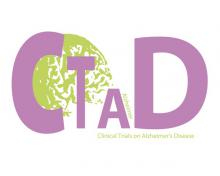Objectives: Dysphagia in elderly patients can cause serious health problems. The aim of this study was to investigate the effects of a new method for the identification of the elderly dysphagic patient. We hypothesized that a simple identification device could reduce errors in providing food and therefore reduce negative outcomes. Design: Two group of participants were enrolled (experimental and control). Each patient received a diagnosis of the severity of his/her own dysphagia disorder on a scale ranging from 1 (no swallowing problem) to 5 (unable to swallow). Inpatients of the experimental group only worn a bracelet with a specific color code for each level of the dysphagia disorder. Operators were trained to check the bracelet color and provide the corresponding diet to the patients. Participants were tested three times over a two months period. Setting: The participants were hospitalized in three nursing homes of the same institute. The colored bracelet method was adopted in two of these nursing homes. Participants: Fifty-five participants were enrolled for the study (44 in the experimental group, 78% female, mean age = 88.9±6.6 years). Forty-two operators (86% female, 64% of age between 36 and 55)) filled in an evaluation questionnaire. Measurements: Several measures of nutrition, hydration, and clinical condition were collected. Results: The method significantly improved hydration (p = .002) and BMI (p = .010) and reduced the risk of bedsore (p < .001) of the patients. Conclusion: The colored bracelet method is an effective instrument for managing the diet of elderly dysphagic inpatients.
F. Bortolazzi, A. Calabro, M. Pesce, U. Tortorolo, T.F. Piccinno, M. Masini, C. Chiorri, Jour Nursing Home Res 2019;5:27-32



